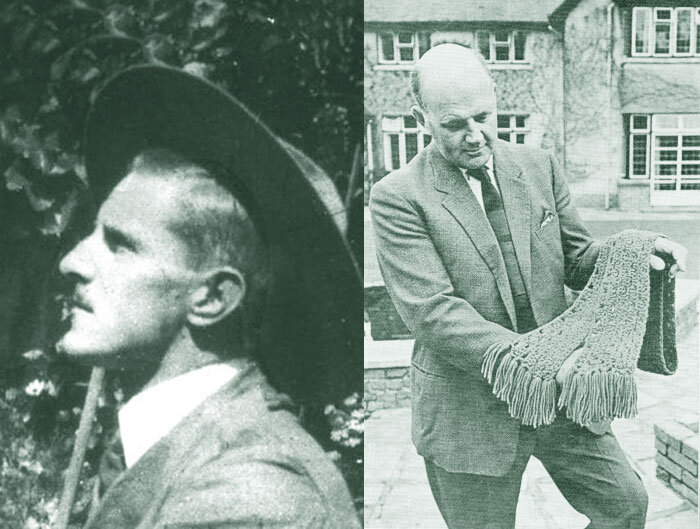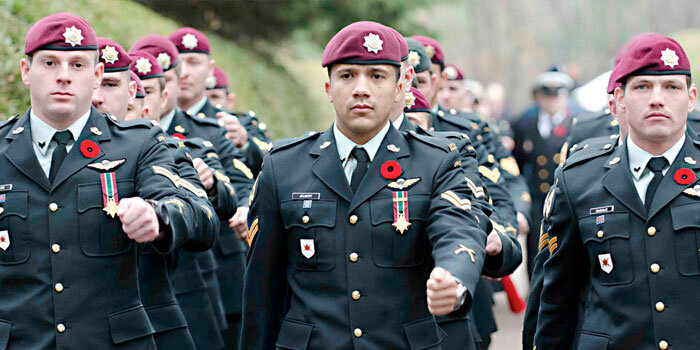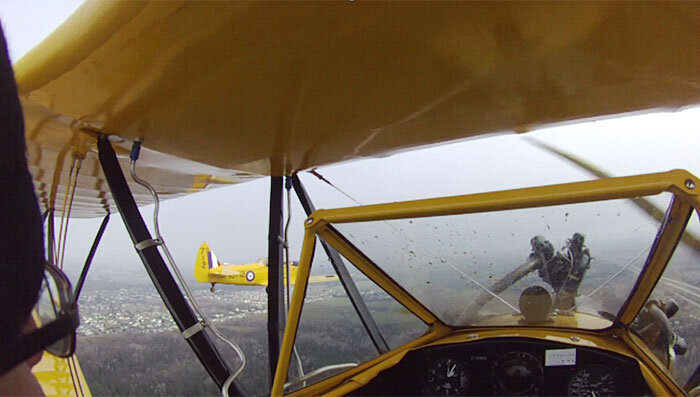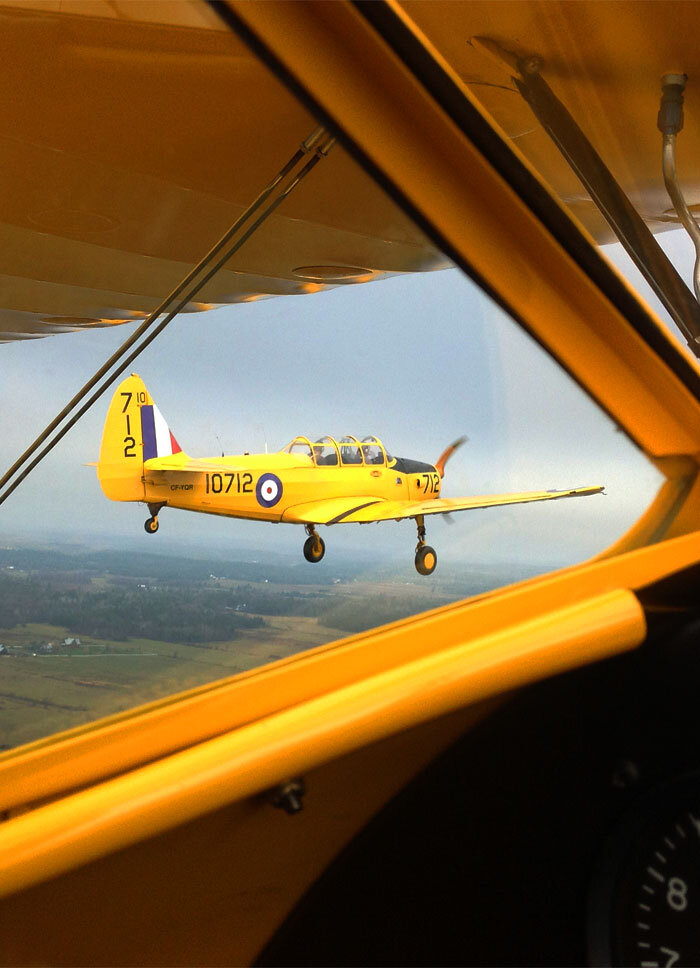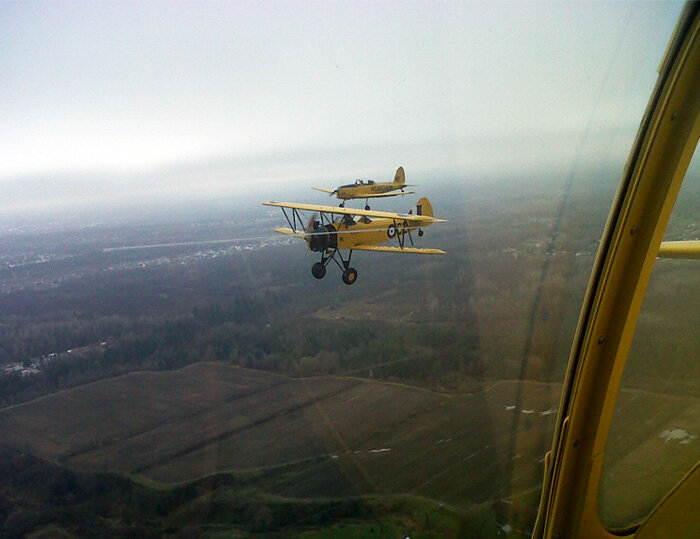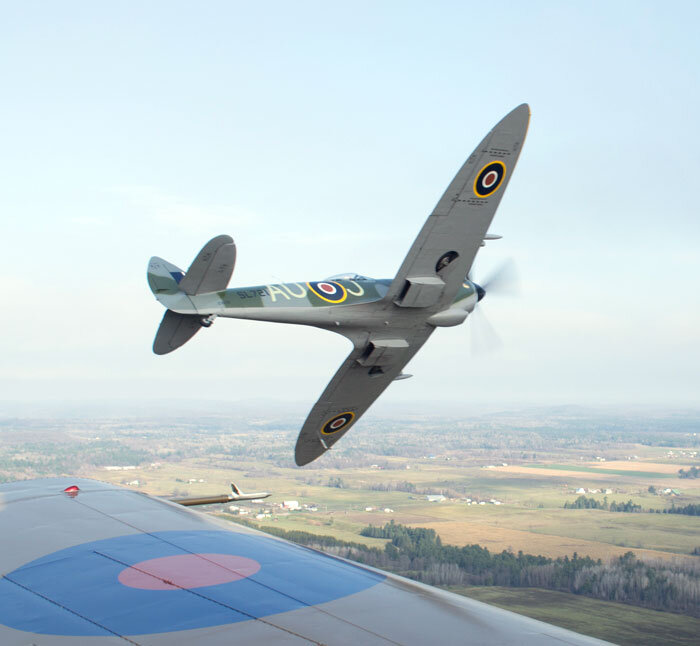UP THE VALLEY OF REMEMBRANCE ON YELLOW WINGS
Remembrance Day is the one day Canadians and other nations set aside to remember, with some degree of sadness and plenty of dignity, the sacrifices of our men and women and their families in conflicts from the Boer War to the War in Afghanistan. It is a time to reflect, to honour, and to pray. It is a time of great sorrow, of deep emotions, of national pride, of sombre contemplation, of profound loss. Is it right, then, that some of us at Vintage Wings of Canada felt great joy and excitement and experienced gratification, even fun, on this saddest of days?
Well, I think it is very right and fitting that people committed to remembering and honouring can enjoy doing so. Our veterans, living and deceased, would no doubt agree. On Remembrance Day 2012, pilots, mechanics and sponsors of six different Vintage Wings of Canada aircraft gathered at the hangar to brief, prepare, and launch a complex series of flypasts of War Memorials, Cenotaphs, Parades, Gatherings and Legion Halls in Western Québec and Eastern Ontario.
One group of three yellow training aircraft, called the Yellow Wings Gatineau Valley Remembrance Day Flight, would fly a formation 50 miles northwest up the Gatineau Valley of Western Québec and then turn to work its way back down the valley and execute a series of sweeping turns overhead small valley villages and towns with names like Danford Lake, Kazabazua, Low, Venosta, Wakefield and Chelsea. Driving over and under the almost prerequisite cold and wet weather of Remembrance Day, the flight would drag behind them a trail of history and emotion that could be felt in the hearts of the many hundreds of Canadians who watched from below.
The Gatineau Valley flight consisted of a flying tribute of three trainers: The Fleet Finch, dedicated to Squadron Leader Hart Finley of Montréal, Québec, honoured the RCAF and other Commonwealth pilots who trained in the first half of the Second World War, and the Fleet-built Fairchild Cornell, dedicated to Scottish-born Ottawan, Flight Lieutenant Archie Pennie, honoured the RCAF, RAF and RN pilots trained in the latter half of the war, while the de Havilland Canada DHC-1 Chipmunk, dedicated to Ottawa native, Flight Lieutenant “Tim” Timmins, paid tribute to the pilots and aircrews of the RCAF during the years of the Cold War.
Two of Vintage Wings' classic Second World War fighter aircraft were also dispatched to make the most visible of all of our flying tributes that day - a flight of remembrance overhead the parade of veterans marching down Wellington Street in Ottawa following the National Remembrance Day Ceremony at the National War Memorial. This would be watched by many thousands of people on the ground and millions across Canada on the Canadian Broadcasting Corporation. Most importantly for us, it would be seen by the hundreds of actual veterans of the Second World War, Korean War, UN Peacekeeping Missions abroad, the Cold War, Bosnia, Kosovo, the First Gulf War, Afghanistan and Operation Mobile in Libya.
The two aircraft to have the honour of flying at the National War Memorial were the Supermarine Spitfire XVI which is presently dedicated to RCAF fighter pilot Flight Lieutenant William Harper of Niagara Falls, Ontario, and the Curtiss P-40N Kittyhawk, co-dedicated this year to Wing Commander James Francis “Stocky” Edwards of Nakomis, Saskatchewan, and RAF Flying Officer Dennis Copping, whose P-40, in the same markings as ours, was found in the Egyptian desert this year, solving a 70-year old mystery about his disappearance.
Alone, unarmed and unafraid – so goes the old recce pilot motto. Paul Kissmann, in the Goodyear FG-1D Corsair, dedicated to Royal Canadian Volunteer Naval Reserve pilot Lieutenant Robert Hampton Gray of Trail, British Columbia, the last Canadian Victoria Cross recipient, would fly a long, lonely zigzag “Rhubarb-style” mission circumnavigating the Ottawa International Airport Control Zone. A “Rhubarb” was a Second World War RAF term for free ranging sorties of fighters or sections of fighters which, taking full advantage of poor weather, would drop below cloud level to search for targets of opportunity. Today was Rhubarb day!
Sadly, after section launch and a long hold for weather to clear, the Spitfire-Kittyhawk Section had to abort and returned to base. The weather over Ottawa was below minimums. The three plane vic-formation of trainers to Québec found cloud at two of their targets, but managed well-timed arrivals at the rest of the planned ceremonies. As well, Kissmann's Rhubarb aborted 2 of the targets for weather, found two more obscured with cloud below and nailed eight dramatic flypasts of Ottawa Valley community ceremonies.
Every hour of planning and flying time, every litre of high octane avgas, every drop of oil, every minute of expensive engine wear, every hour of maintenance and every bit of the risks involved in these complex Remembrance Day missions were paid for or absorbed by Vintage Wings of Canada, its founder, its volunteer sponsors, and even its pilots. Not one cent of government money went into this project. While many millions of tax dollars were spent this year to commemorate the sacrifices and the importance to Canada today of a war that took place 200 years ago, not one penny was put behind our coast-to-coast projects of remembrance. We hope that, in the near future, our 365-day-a-year project of remembrance will be noticed, understood, appreciated and funded to some extent by government partners.
Regardless of support from governments, our flights of Remembrance Day 2012 brought us much joy and fostered a powerful sense of pride in our team. I had the honour of sponsoring the flight of the Fleet Finch for the Gatineau Valley mission. I joined pilot Peter Ashwood-Smith for 1.7 hours of open cockpit, 85 mph flying in 4ºC temperatures. The flight gave us an appreciation of the difficulties faced and conquered by BCATP instructors and students in the hard winters of 1940 to 1945. Join us now as we take you on the Yellow Wings Gatineau Valley Remembrance Day Flight.
Dave O'Malley
Our three plane mission was preceded by a thorough briefing by Flight Lead Rob Fleck. Fleck, flying the Flight Lieutenant Archie Pennie Cornell, would take us up through the Gatineau Hills and then back down the Gatineau River Valley on an emotional flight of remembrance. With a family farm and cottage at Danford Lake, Québec, Rob has been flying these hills and valleys for 35 years. The route we would take would essentially be the same as the route he takes to and from his cottage every weekend in the summer. Rob knows where every cell tower, landing strip, and hill is for two hundred miles. If any one of us was to have an engine failure and had to put down in a farmer's field, there was a good likelihood that the farmer was a friend of Rob's. Our route would take us northwest overhead Danford Lake, holding for our first memorial flypast at the town of Kazabazua, Québec. From there, we would fly down the Valley and overhead five more cenotaphs and their ceremonies. Photo: Dave O'Malley
The Squadron Leader Hart Finley Fleet Finch is readied for the flight. This would be the only Vintage Wings open cockpit airplane to venture out on 11 November 2012. Photo: Dave O'Malley
On a rain-soaked ramp, in near freezing temperatures, the three aircraft of the Yellow Wings Gatineau Valley Remembrance Day Flight warm up. Rob Fleck and Dan Morden crewed the Cornell, Don Buchan and Mike Woodfield crewed the Chipmunk and Peter Ashwood-Smith and Dave O'Malley were in the Finch. Photo: Dave O'Malley
Related Stories
Click on image
Vintage Wings of Canada volunteer, Michel Côté, captures the three aircraft from a different angle during the warm-up. Photo: Michel Côté
Warm-up completed, the Squadron Leader Hart Finley Fleet Finch trundles along following Flight Lead Rob Fleck in the Flight Lieutenant Archie Pennie Cornell. Photo: Michel Côté
The three aircraft of the Gatineau Valley Remembrance Day Flight head toward the runway, while Paul Kissmann in the Lieutenant Robert Hampton Gray FG-1D Corsair waits. Paul will shortly launch on a Remembrance Day mission of his own, taking the Corsair on a long circuitous flight round the lower Ottawa Valley to visit 12 memorial services. Photo: Michel Côté
Flight Lead Rob Fleck lines up with the centreline of the runway, while we wait at the threshold and Don Buchan in the Flight Lieutenant Tim Timmins Chipmunk works his way past him. The weather was decidedly cold and wet when we took off. The propeller is picking up the water from the ramp and throwing it onto the underside of the wings and on to the windshields. Photo: Dave O'Malley
Peter Ashwood-Smith, the pilot of the Squadron Leader Hart Finley Fleet Finch, closes up on Flight Lead Rob Fleck for the first formation rejoin. Ashwood-Smith was wearing a Contour video camera on his helmet, so we are seeing exactly what he is seeing. Photo: Peter Ashwood-Smith
At the same moment that the previous photo was taken, Vintage Wings of Canada's Dan Morden, in the back cockpit of the Cornell, captures our Finch as Ashwood-Smith manoeuvres her in tight after takeoff. In the extreme upper left corner of this image you can just make out the Flight Lieutenant Tim Timmins Chipmunk (just a black dot here), turning in to join with us. On the runway below, we can see Paul Kissmann in the Corsair backtracking the runway for takeoff. Photo: Dan Morden
The formation works its way up through the Gatineau Hills well below the cloud. Photo: Dave O'Malley
Working our way to the starting point for our first flypast at Danford Lake, we spread our formation wide. Photo: Dave O'Malley
In the Flight Lieutenant Tim Timmins de Havilland Chipmunk, Buchan captures the flight heading northwest and skirting well away from the murky weather which was travelling ahead of us. Photo: Don Buchan
After 25 minutes, the flight broke out from under the cloud to a glorious late autumn day in the Gatineau Hills. In the open cockpits of the Finch, Ashwood-Smith and O'Malley welcomed the sunshine. Photo Dan Morden
As we neared the initial point for the run into the cenotaph ceremony at Danford Lake, the clouds began to form below us. Photo: Dave O'Malley
From the up sun side of the formation, the other aircraft in the formation were a dazzling yellow as seen from the Finch, but to Dan Morden in the Cornell, the Finch was silhouetted. Photo: Dan Morden
At a signal from Flight Lead Rob Fleck, Ashwood-Smith in the Finch and Woodfield in the Chipmunk closed up the formation for the flyover of the Danford Lake ceremony. Sadly, cloud had formed well below us and the people below only heard the passing of the three aircraft. With the aid of GPS, we were still able to fly directly over the site of the ceremony below. Photo: Dave O'Malley
As we make a turn overhead Danford lake, it is obvious that the whole area to the North is covered with cloud, so we abort the run into the town of Kazabazua and head directly to the tiny village of Venosta, Québec, where, apparently, there is a small gathering in the parking lot of the village municipal building. When, in fact, we flew directly over the village and looked down, there was no one standing there... guess they didn't get the memo. Photo: Peter Ashwood-Smith
Having turned 180º at Danford Lake and spread out, inbound for the non-existent crowd at Venosta, we were warmed by the sun. Photo: Dave O'Malley
A nice shot of the Flight Lieutenant Tim Timmins de Havilland Chipmunk as she sails above the snowy cloud banks that obscured Danford Lake and caused the Kazabazua flyby to by aborted. Photo: Dan Morden
Leaving the snowy white undercast behind us, we approach Venosta and begin to close up for the flypast of the empty parking lot. Photo: Dave O'Malley
After Venosta, we spread out again and continue down the Gatineau Valley to a flypast and 360º turn overhead of the cenotaph at Low, Québec, followed by another identical pattern overhead Wakefield, Québec. By now, despite the sun in my face, I am beginning to feel the effects of the prolonged (about 40 minutes so far) exposure to the 85 mph slipstream. Photo: Dave O'Malley
At Wakefield, on the banks of the Gatineau River, hundreds of veterans, armed forces personnel, and citizens attend the Remembrance Day ceremony at the Cenotaph or Wakefield War Memorial. Not many were expecting the emotional flypast of the three vintage aircraft and none could know that the entire and considerable cost, time consuming organization and complex execution of the flypast was borne by the sponsors, pilots and members of Vintage Wings of Canada who donated the fuel, airplanes, time and skills required to pull it off. Photo: Barry Schwerdfeger
Participants in the Remembrance Day ceremony at Wakefield, Québec, take snapshots of the formation as it appears over the Wakefield, Québec train station, inbound for the flypast. Photo: David Irvine Photography
Passing overhead the Wakefield ceremony, followed by the eyes of hundreds of surprised onlookers, Fleck leads the formation in a wide left turn over the mountains to set up for a second pass from the north. Photo: David Irvine Photography
The Wakefield War Memorial, on the banks of the mighty Gatineau River, featured the flags of Canada, Great Britain, the United States of America and the Canadian Province of Québec. Photo: Barry Schwerdfeger
The assembled spectators and honoured guests listen to a speech, while facing the Gatineau River – the perfect vantage point from which to view the emotional flypast of the three vintage aircraft. Photo: Barry Schwerdfeger
Finishing the turn and coming down the river again, the Remembrance Flight shares the limelight with the world famous Wakefield Covered Bridge. The Wakefield covered bridge was built in 1915 at the entrance of the village and was one of the first bridges to link the two shores of the Gatineau River. Sadly, the bridge was completely destroyed by fire (vandals pushed gas soaked car on to the bridge and set in on fire) in 1984. The population of the village decided to collect money to rebuild the bridge. Fourteen years later, in 1998, the new Gendron covered bridge was inaugurated. Photo: David Irvine Photography
Flight Lead Rob Fleck in the Cornell, leads the three historic aircraft for one last flypast of Wakefield, now bound for Chelsea, Québec. Photo: David Irvine Photography
The day of the flypast, we received a warm letter of thanks from Neil Faulkner, one of the event's organizers. He writes:
To Mike Potter, pilots, mechanics and all the supporting team at Vintage Wings: I have just returned from our village and municipality Remembrance Day Ceremony, held at our Cenotaph on the banks of the Gatineau River. It was a truly moving ceremony of sincere commemoration of the sons, daughters and families that gave so much to us through their commitment to protect and save human rights wherever.
Our Canadian Legion led ceremony was typical for a small, rural village complete with Forces personnel, cadets, band and bagpiper. We sometimes benefit from being in a direct line with the Ottawa Cenotaph, and enjoy the "missing wingman" flypast with the CF-18s.
This year, out of the foggy morning, flew your three-plane flypast of vintage trainers. Not once, but twice! A truly moving sight that helped some of us seniors remember that special burble of those slower times. In any event, we really appreciated the flypast – our ceremony has grown year by year, and this year, many generations of new, young, and old Canadians, were in attendance to remember those brave souls that have given us so much.
Please convey my thanks to all those concerned at Vintage Wings. You are to be congratulated for your work and generosity in conserving an important part of our heritage. We are truly blessed.
Don Buchan, in the front seat of the Chipmunk shoots Rob Fleck in the Cornell, as he leads us toward the last and most important of our flypasts – at Chelsea's Pioneer Cemetery where, each year, veterans, members of the public, soldiers from the Royal Canadian Regiment at CFB Petawawa, and medics of the Canadian Armed Forces gather to remember the fallen and in particular a man by the name of Private Richard Rowland Thompson.
Recommended unsuccessfully for the Victoria Cross for deeds of exceptional bravery while attending wounded comrades while under fire in the Boer war, army medic Private Richard Rowland Thompson (left) instead became the only soldier from Canada to be awarded the Queen’s Scarf. Queen Victoria had decided to honour four of the bravest soldiers from the colonies serving in the war by presenting them with scarves she had designed and crocheted (four more were later awarded to British troops). The award, while not as prestigious as the Victoria Cross (though some incorrectly consider it higher by virtue of its rarity), was nevertheless a very high honour indeed. Thompson also received the Queen’s South Africa Medal with three clasps. He survived the war, but died of acute appendicitis in Buffalo, NY in 1908. Photo via Gatineau Valley Historical Society
After Richard Rowland Thompson's death, ownership of his Queen's Scarf passed to his older brother William, of Cork, Ireland. Here, William's son (and hence Richard Thompson's nephew), Samuel F. Thompson, shows the scarf off outside the family home in Cork, just before he brought it to Canada for presentation to the people of Canada in a special ceremony on Parliament Hill in Ottawa in May 1965. Photo: NAC C16705 via Gatineau Valley Historical Society
Down below, on the ground at Chelsea Pioneer Cemetery, paratroopers from the 1st and 3rd Battalions of the Royal Canadian Regiment, based at Canadian Forces Base Petawawa (Camp Petawawa), march solemnly to the site of Richard Thompson's grave. Private Thompson had immigrated to Buffalo, New York, from Cork, Ireland, and had moved to Ottawa in 1899 where he enlisted in the 43rd Ottawa and Carleton Rifles, one of the predecessors of the present Cameron Highlanders of Ottawa and part of the Royal Canadian Regiment, as a medical assistant. His age was 22. Photo: Trevor Greenway, via the LowDownOnline on Flickr
Sombre paratroopers from the Royal Canadian Regiment place their poppies at the grave of their long-dead comrade, Private Richard Rowland Thompson. Photo: Trevor Greenway, via the LowDownOnline on Flickr
School children from the area of Chelsea, Québec, hold up signs of gratitude for the soldiers of the Royal Canadian Regiment who turned out for the ceremony. At Vintage Wings of Canada, it is our prime directive to teach young Canadians like these about the sacrifices of the men and women of our Armed Forces. Our aircraft are simply tools with which we will achieve this. Photo: Trevor Greenway, via the LowDownOnline on Flickr
Wreaths of Remembrance and gratitude stand alongside the tombstone of Private Richard Rowland Thonpson, Queen's Scarf Recipient. During the Boer War, Thompson was cited for a number of acts of gallantry during the Battle of Paardeberg in 1900. The Royal Canadian Regiment took part in its first battle, during which Private Thompson demonstrated fearless courage while assisting wounded comrades. During the battle, he remained for seven hours in an exposed position, keeping pressure on the ruptured jugular vein of a Private James L. H. Bradshaw. Nine days after that, he crossed 200 yards of bullet-swept ground to reach another wounded soldier. On finding that the man had died, he walked back to his own lines in defiance of the enemy's fire. Because he was an Army medic, each year on Remembrance Day, there are Army medics or members of the Canadian Forces Health Services in attendance. Photo: Trevor Greenway, via the LowDownOnline on Flickr
After the flypast of the Chelsea Pioneer Cemetery, it was time to exit stage left and head for home. The conditions whilst making our flybys of Chelsea had deteriorated somewhat. Here, Fleck leads the formation over the Chelsea Dam, bound for the Gatineau Airport. Photo: Peter Ashwood-Smith
As we approach the Gatineau Airport, the formation slide from a V-formation to Echelon Right, allowing each aircraft to break left in succession over the field without flying into each other. Note the oil and grease accumulation on the windshield from the five-cylinder Kinner radial engine. This makes it impossible to see out the front windscreen when flying into the sun. Photo: Peter Ashwood-Smith
Ashwood-Smith moves in close for the smart overhead break, inbound for Gatineau. Photo: Dave O'Malley
Closer still. Photo: Dave O'Malley
Now trailing us in echelon right, Woody brings the Flight Lieutenant Tim Timmins de Havilland Chipmunk in tight for the break. Photo: Dave O'Malley
Dan Morden captures the echelon formation from the Cornell. Photo Dan Morden
And Don Buchan captures the echelon formation from the Chipmunk. In the back of the Finch, O'Malley is nearly speechless with hypothermia. Photo: Don Buchan
Home at last. Rob Fleck departs the formation in the overhead break, with all of us following at 5-second intervals. Photo: Peter Ashwood-Smith
After the break, Ashwood-Smith brings the Squadron Leader Hart Finley Fleet Finch in for a landing and a full stop. Mission accomplished. Photo: Peter Ashwood-Smith
The Other Remembrance Day Missions
Dave Hadfield signals ground crew that he is about to crank over the Allison engine of the P-40 prior to the Remembrance Day flypast. Photo: Terry Cooper
Prior to launch on the same morning, John Aitken, in the Flight Lieutenant William Harper Spitfire XVI, leads Dave Hadfield in the Wing Commander Stocky Edwards and Flight Lieutenant Dennis Copping Curtiss P-40 Kittyhawk. Their mission for the day was to overfly the parade of veterans down Ottawa's Wellington Street following the Remembrance Day ceremonies at the National War Memorial as we have done in years past. The weather was good overhead the Gatineau Airport, but during the hold for the flypast, the weather over Ottawa's downtown lowered significantly, preventing the flypast. They returned to base after forty minutes. Photo: Michel Côté
The weather over the Gatineau Airport gave the downtown flypast team hope that the day would be a success. Sadly, it was not to be and Dave Hadfield and Terry Cooper in the P-40, seen launching here, had to return without the goal achieved. Such is aviation. Photo: Michel Côté
After takeoff, Dave Hadfield forms up with the Spitfire flown by John Aitken as they head toward downtown a hold position before making their pass over Ottawa's Wellington Street. Photo: Terry Cooper
The two fighters climb higher to orbit above the low cloud that hangs like a shroud over downtown Ottawa. Sadly, the flypast was not to be, and the pair were forced to abort the mission after a long hold. Photo: Terry Cooper
As the pair of fighters return from the aborted mission, Hadfield, in the P-40, switches to the right side of the formation for the left turn over the field. Photo: Terry Cooper
Aitken, Hadfield and Cooper make their run into their home field at Gatineau Airport, visible on the right. Photo: Terry Cooper
John Aitken hauls the Spitfire into a left turn for home – mission unaccomplished. Photo: Terry Cooper
Paul Kissmann in the Lieutenant Robert Hampton Gray, VC Goodyear FG-1D Corsair goes wheels in the wells and heads for his complex mission to overfly 12 different Remembrance Day events throughout the lower Ottawa River Valley. With the bad weather mostly hanging over the downtown area, Kissmann was able to deliver on most of his promises to commemorate. Photo: Michel Côté
A screen shot from Paul Kissmann's GPS unit shows his “Rhubarb” route starting at Gatineau at upper right. The planned first leg to Orleans, Ontario had to be abandoned due to low cloud. During his hour long flight, Kissmann's original flypast route would take him over 12 different Remembrance Day ceremonies, but he managed to hit eight of his planned ceremonies plus overflying two others above the scattered cloud (the crowds could hear him). He made dramatic appearances at Navan, Manotick, Kemptville, Merrickville, Smiths Falls, Perth, Carleton Place, Almonte, Pakenham, Arnprior and more. Bravo Zulu Gray Ghost
One more Sponsored Remembrance Day Flight
In the afternoon of Remembrance Day 2012, two Vintage Wings of Canada members sponsored an additional formation flight of the region. While it did not coincide with ceremonies on the ground, the flight paid homage to BCATP airfields in the Ottawa region. Photographer Richard Gorman was one of the sponsoring members and sent us a few shots of the flight, which was carried out under considerably better weather conditions.
The Flight Lieutenant Archie Pennie Cornell leads Peter Ashwood-Smith in the Squadron Leader Hart Finley Fleet Finch overhead the small village of Appleton, Ontario, in the township known as Mississippi Mills. The river below is the Mississippi River, but not the big one. Photo: Richard Gorman
The afternoon flight was sponsored by two Vintage Wings members, with the Flight Lieutenant Archie Pennie Cornell and the Squadron Leader Hart Finley Finch. Here, Richard Gorman captures the lovely Cornell, flown by 2011 Yellow Wings Team Lead, Ulrich Bollinger. Photo: Richard Gorman
As part of the Remembrance Day flights, the Cornell and Finch asked for and received permission to overfly the Ottawa International Airport, where, 70 years ago, No. 2 Service Flying Training School at Uplands was graduating fully-winged pilots for the British Commonwealth Air Training Plan. In fact, Squadron Leader Hart Finley, in whose name the Fleet Finch is dedicated, was a Harvard instructor at Uplands 70 years ago! Photo: Richard Gorman




































